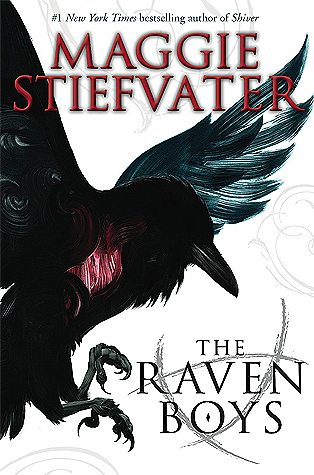The Raven Boys by Maggie Stiefvater

Review: The Raven Boys by Maggie Stiefvater
For my third novel in the R.I.P. Challenge, I read The Raven Boys. In case you missed my earlier post and reading lineup, here is the concept behind this challenge:
Started by Carl at Stainless Steel Droppings, R.I.P. is a reading challenge in which imbibers come “together to enjoy the literature most associated with the darkening days and cooling temperatures of Autumn:”
Mystery
Suspense
Thriller
Gothic
Horror
Dark Fantasy

As I read The Raven Boys, I fell in love with the novel’s assembly of characters—teens, psychics, scryers, and a lost ghost. Sixteen-year-old Blue lives with her mother and an assortment of elder psychic “aunts” (which, I admit, put me in mind of the fairytale “Sleeping Beauty”). Blue is not psychic but possesses the ability to augment whatever paranormal activity is afoot. She is often called upon to witness psychic readings and clarify ghostly messages.
I adore Blue. She’s a no-nonsense, hardworking teen who holds down three jobs to help with household expenses. On principle, Blue disdains Aglionby students, boys from the local elite prep school. Naturally, these are the very characters about to enter (and disrupt) Blue’s world.
The Raven Boys clique is composed of a tight-knit foursome: Adam, who’s on scholarship and for whom Blue feels an immediate affinity; Ronan, who dwells in a dark world of regret and anger; Noah, whose shy manner endears him to Blue; and Gansey, the rich and magnetic leader of the bunch.
Blue has two secrets. She has been forewarned that her kiss will cause the death of her true love—a sort of reverse Sleeping Beauty, if you will. And she has just learned that one member of the foursome will die within the year. This knowledge does not stop Blue from joining the Raven Boys. Soon, the now fivesome embarks on a quest to uncover the secret of the ancient ley line.
I’d never heard of a ley line before. Had you? The concept of the ley line is that ancient sites such as Stonehenge, the Pyramids, and Machu Picchu are connected geographically through invisible lines. Once Alfred Watkins presented this theory in 1921, people speculated that ley lines contained spiritual energy. Benjamin Radford in his article “The Lore and Lure of Ley Lines” (do you think Radford loves alliteration?) explains “ley lines rose from mundane origins to an entire field of study, spawning books, seminars, and groups of ley line enthusiasts who gather to discuss, research, and walk the lines.”
So, I was ignorant of all this.
Gansey is convinced that if he can awaken the ley line in town, he can connect with an ancient Welsh king. This is the part of the story that I did not enjoy. I eagerly read about Blue and her home life, the teens’ personal challenges and fierce friendship, the greedy villain, and the troubled ghost. But I was only mildly interested in the ley line story thread, which unfortunately dominated the last quarter of the novel.
Overall, I was engaged throughout this novel though, as I said, less so when talk turned to ley lines. I think the ideal reader will be someone who enjoys mixing mythological elements with young adult stories of ghosts and psychics.
For lots more reviews of perilous books, films, and short stories, please visit the R.I.P. review site.